Recent Storm Damage Posts
The Aftermath of Storm Flood Damage: Navigating the Path to Recovery
1/2/2024 (Permalink)
Storms and flooding can wreak havoc on homes and communities, leaving behind a trail of destruction and a long road to recovery. The aftermath of storm flood damage can be overwhelming, both emotionally and physically. Understanding the steps to take in the aftermath of a flood is crucial for homeowners to navigate the path to recovery effectively. In this blog, we will explore the key considerations and steps to take when dealing with the aftermath of storm flood damage.
Ensure Safety
First and foremost, prioritize your safety and the safety of your family. Before entering your home after a flood, wait for authorities to deem it safe. Be cautious of electrical hazards, structural damage, and contaminated water in your property. Take photos and videos of the flood damage to your property, both inside and outside. This documentation will be essential for insurance claims and assistance applications.
Contact Your Insurance Provider
Notify your insurance provider about the flood damage as soon as possible. Understand your policy coverage details and file a claim promptly. Provide the documentation you gathered as evidence of the damage.
Begin the Cleanup Process
Remove any standing water from your property using pumps or wet-vacs. Use fans and dehumidifiers to dry out the affected areas as quickly as possible. Remove damaged furniture, carpets, and other belongings to prevent further mold growth. Consider hiring a professional restoration company with experience in flood damage cleanup. These professionals have the expertise, equipment, and knowledge to thoroughly restore your property.
Mitigate Mold Growth
Mold can start to grow within 24-48 hours after a flood. Thoroughly clean and disinfect surfaces and employ proper drying techniques to prevent mold growth. Consider using mold inhibitors or hiring a mold remediation specialist if necessary. Have a licensed electrician inspect your electrical system before restoring power. Have your HVAC system checked and cleaned by professionals to prevent contamination.
Communicate with Local Authorities and Disaster Assistance Programs
- Stay updated with local authorities regarding disaster assistance programs and resources available.
- Check if you qualify for any government assistance programs to aid in your recovery.
Take Steps to Prevent Future Flood Damage
Implement flood-resistant modifications to your property, such as elevating electrical outlets and appliances, installing flood-resistant barriers, or redirecting water flow away from your home. Consider purchasing flood insurance if you live in an area prone to flooding. The aftermath of storm flood damage can be emotionally challenging. Seek support from family, friends, or professional counselors to help cope with the emotional toll.
Dealing with the aftermath of storm flood damage requires patience, resilience, and practical steps towards recovery. Prioritize your safety, document the damage, contact your insurance provider, and engage professional help for a thorough cleanup. Mitigate mold growth, address electrical and HVAC systems, and explore available disaster assistance programs. Take proactive measures to prevent future flood damage and seek emotional support during this challenging time. With a comprehensive and organized approach, homeowners can navigate the path to recovery and restore their homes to their former glory.
Tropical Chaos: Assessing the Environmental Fallout of Storm Debris in the Southeast
9/27/2023 (Permalink)
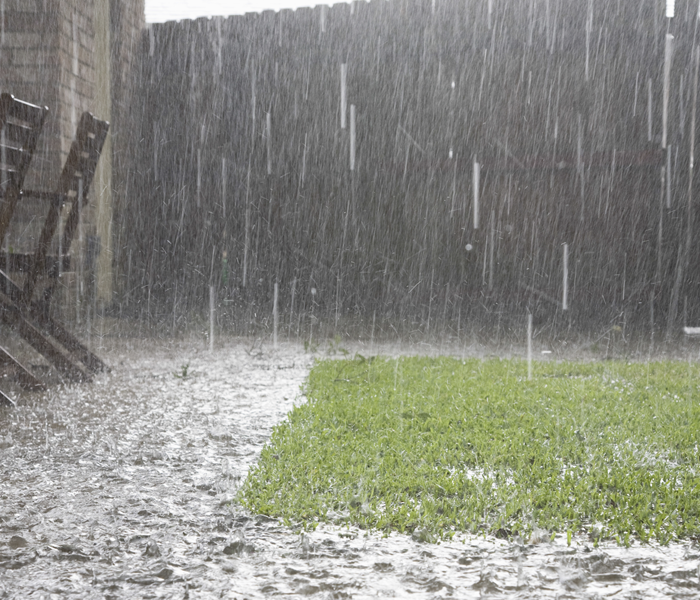 Take proactive measures to protect your environment during a storm
Take proactive measures to protect your environment during a storm
Storms can have devastating effects on communities, infrastructure, and the environment. In the Southeast region, where severe weather events are not uncommon, the aftermath of storms often includes significant amounts of debris. While the focus is often on the immediate cleanup and recovery efforts, it is equally important to recognize and address the environmental impact of storm debris. In this blog post, we will explore the environmental consequences of storm debris in the Southeast and the urgent need for proper management.
Habitat Destruction
Storm debris, such as fallen trees and vegetation, can result in habitat destruction for various species. Trees provide critical habitat and food sources for birds, insects, and other wildlife. When their habitats are destroyed, these species can be displaced or face difficulties finding food and shelter. This disruption to the ecosystem can have long-lasting effects on biodiversity and the overall health of the regional ecosystem.
The removal of vegetation by a storm can lead to increased soil erosion, especially in areas prone to heavy rainfall. Without the natural protection of plants and trees, soil becomes more vulnerable to erosion, resulting in sediment runoff into waterways. This sedimentation can negatively impact aquatic ecosystems by reducing water quality, harming fish and other aquatic organisms, and disrupting the delicate balance of the ecosystem.
Increased Flooding Risk
Storm debris, if not properly managed, can contribute to increased flooding risks. When debris accumulates in waterways, it can obstruct the natural flow of water, causing blockages and potential flooding. This not only poses a danger to neighboring communities but also exacerbates the environmental consequences by further disrupting the delicate balance of the surrounding ecosystems.
Storm debris may release harmful pollutants into the air when it decomposes or is burned improperly. Burning debris can release toxic chemicals and particulate matter, contributing to air pollution. In addition, as debris decomposes, it releases methane gas, a potent greenhouse gas that contributes to climate change. Proper management and disposal of storm debris are crucial to minimizing air pollution and mitigating its impact on both human health and the environment.
Threat to Coastal Areas
Coastal regions in the Southeast are particularly vulnerable to the environmental impact of storm debris. Debris washed ashore can damage sensitive coastal habitats, including coral reefs, mangroves, and seagrass beds. These habitats are vital for marine biodiversity, providing nursery grounds for fish and serving as protective barriers against erosion and storm surge. The accumulation of storm debris along shorelines can disrupt these delicate ecosystems and exacerbate erosion risks, compromising the resiliency of coastal communities.
Proper Debris Management
Addressing the environmental impact of storm debris requires proper management and disposal practices. It is essential to prioritize recycling and composting options for organic debris, such as fallen tree branches and vegetation. Recycling provides an opportunity to repurpose materials and reduce the demand for virgin resources. Additionally, implementing effective sediment and erosion control measures during cleanup can minimize the impact of debris on water quality and aquatic ecosystems. Collaborative efforts between local communities, government agencies, and environmental organizations are crucial to ensure a comprehensive and sustainable approach to storm debris management.
The environmental impact of storm debris in the Southeast is an urgent concern that requires immediate attention. It is our responsibility to implement sustainable solutions, prioritize recycling and composting, and take proactive measures to minimize the environmental impact. By doing so, we can protect the delicate balance of our ecosystems, preserve biodiversity, and ensure a sustainable future for the Southeast and beyond.
From Chaos to Cleanliness: Navigating Flood Cleaning Requirements for Effective Restoration
6/13/2023 (Permalink)
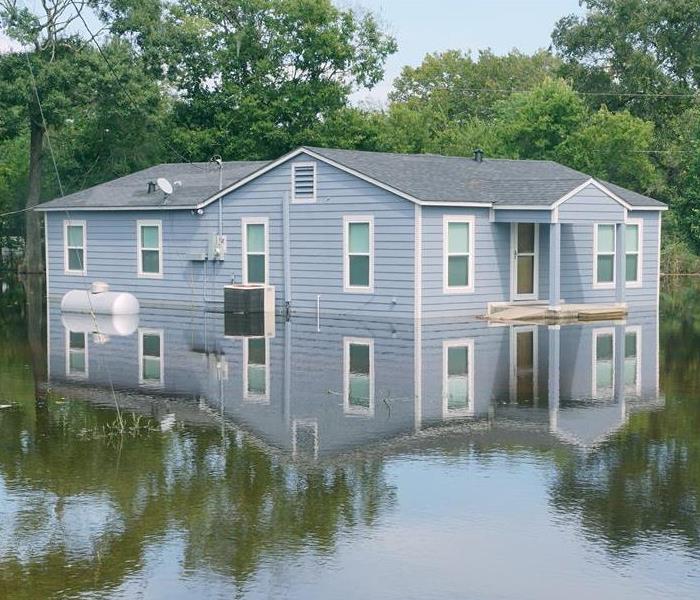 When faced with the aftermath of a flood, cleaning, and restoration become critical tasks to ensure the safety and recovery of affected areas.
When faced with the aftermath of a flood, cleaning, and restoration become critical tasks to ensure the safety and recovery of affected areas.
When faced with the aftermath of a flood, cleaning, and restoration become critical tasks to ensure the safety and recovery of affected areas. Flood cleaning requirements involve a systematic approach to address various aspects, from water extraction and sanitization to structural drying and mold prevention. In this blog post, we will delve into the essential steps and considerations for effective flood cleaning, helping you navigate the requirements and restore your space to a safe and habitable condition.
Safety First
Before initiating any flood cleaning efforts, prioritize safety precautions. Ensure that the power supply is disconnected in the affected area to prevent electrical hazards. Use personal protective equipment, including gloves, masks, and waterproof boots, to protect yourself from potential contaminants and biohazards in the floodwater. If the floodwater is extensive or the damage is severe, consider seeking professional assistance to mitigate risks.
Water Extraction and Drainage
The first step in flood cleaning is removing standing water from the affected space. Use pumps, wet/dry vacuums, or professional water extraction equipment to efficiently eliminate water. Pay attention to hidden pockets of water in walls, floors, and crawl spaces, as they can lead to long-term damage if left unaddressed. Proper drainage is crucial to prevent further water accumulation and potential structural issues.
Thorough Cleaning and Sanitization
Floodwater can introduce harmful pathogens, bacteria, and other contaminants into your space. Thoroughly clean and disinfect all surfaces, including walls, floors, furniture, and personal belongings. Use appropriate cleaning agents and disinfectants recommended for flood restoration. Pay special attention to areas that came into direct contact with floodwater, ensuring they are properly cleaned and sanitized to minimize health risks.
Structural Drying
Effective drying is crucial to prevent mold growth, rot, and further damage to the building structure. Utilize dehumidifiers, industrial fans, and specialized drying equipment to facilitate the drying process. Remove any wet materials that cannot be salvaged, such as saturated carpets, drywall, and insulation. Ensure proper ventilation throughout the area to expedite drying and reduce moisture levels.
Mold Prevention
Mold can start growing within 24 to 48 hours of a flood, posing serious health risks and causing extensive damage. Take proactive measures to prevent mold growth by thoroughly drying the space, addressing any hidden moisture, and utilizing mold inhibitors or antimicrobial treatments as recommended. Conduct regular inspections in the following weeks and months to identify any signs of mold growth and take immediate action if necessary.
Restoration and Repairs
Once the space is thoroughly cleaned, dried, and protected against mold, assess the extent of structural damage and initiate necessary repairs. This may involve replacing damaged materials, repairing electrical systems, restoring plumbing, and addressing any other structural or cosmetic issues caused by the flood. Consult with professionals if needed to ensure comprehensive restoration.
Flood cleaning requirements encompass a series of crucial steps to effectively restore and recover from the devastating impact of flooding. Prioritize safety, promptly remove standing water, thoroughly clean and sanitize all surfaces, implement proper drying techniques, and take proactive measures to prevent mold growth. Remember, seeking professional assistance and guidance can be invaluable to ensure a thorough and successful flood-cleaning process. By following these requirements and taking proactive measures, you can restore your space to a safe and habitable condition while minimizing the long-term effects of the flood.
How to Repair Storm Damage to Your Home
1/9/2023 (Permalink)
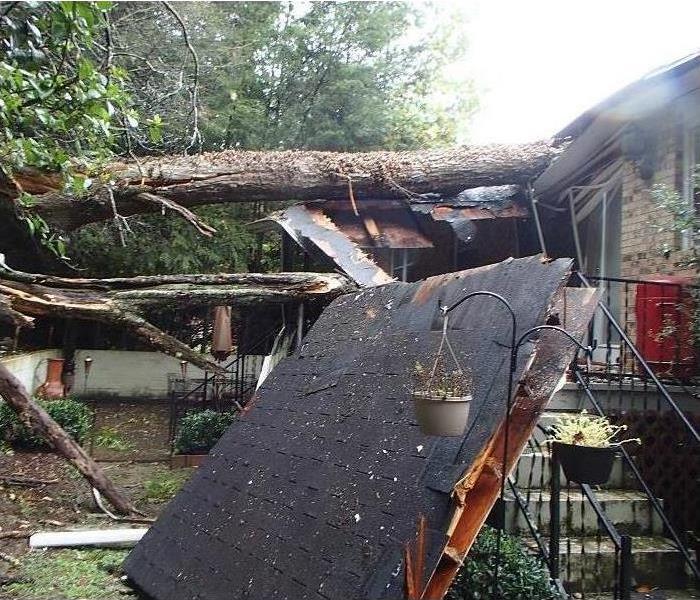 Storms can really damage your Hendersonville, NC home.
Storms can really damage your Hendersonville, NC home.
Storm Damage: Preparing and Repairing
Whether you're a homeowner, renter, or condo dweller, it's important to know how to deal with storm damage. Storms can cause severe damage to homes and make it harder for people to get back on their feet in their own homes after a disaster. This guide will help you prepare before storms hit and help you repair your home if there is damage after the storm passes.
Prepare for the Worst
The first step to recovery is preparation. Here are some tips to get you started:
Make a list of important documents, such as your insurance policy, medical records, and bank account information. Keep this list in a safe place just in case you need it later on. You can also store digital copies of these documents somewhere offsite if you have them on your computer or phone.
If you live in an area prone to flooding or storm damage, contact your insurance company and let them know where you are located. This will help ensure that they understand the risks associated with insuring someone who lives in such an area and can adjust their rates accordingly when necessary.
Store an emergency supply kit near your main exit point from the house so that it's easy to grab when needed (e.g., during storms). The contents of this kit should include water purification tablets/drop neutralizers, food rations sufficient for three days (including non-perishable items), canned goods for two weeks worth of meals (including meat), toiletries (toothbrush/paste etc.), clothing suitable for warm weather conditions (i.e., tank tops/shorts)
Evaluate the Damage and Document It
After the storm is over, you will want to quickly assess the damage. Start by documenting all of the damage with pictures. After you've documented the damage in detail and photographed it (with your camera or smartphone), make sure you keep copies of these images stored on a flash drive or other secure electronic storage device. This way, if there's ever an issue with your insurance claim you will have proof of the damage. They may need documentation of what happened within those first few days after the storm passed through your area and you want to make sure you have that readily available.
Cut Off the Power
If you have a home generator, turn it off at the main switch and make sure all gas lines are shut off. If you have an emergency power system, ensure that it is not connected to the grid by turning off the circuit breaker for your house and checking that no electrical panels are attached. Shutting off power can be dangerous because of the risk of electrocution or fire from electrical appliances. Therefore, it is important only to do so if a qualified professional recommends it or after giving yourself plenty of time to do so safely.
After turning off power in your Hendersonville, NC home, check for potential hazards such as gas leaks (use a flashlight) and fire hazards (remove flammables). You may need to call emergency services if any such hazards exist before proceeding with repairs on your property.
If you suspect there has been damage due to high winds or other weather-related events like tornadoes or hurricanes, refrain from using any electrical appliances until they have been inspected by a licensed electrician
Contact Your Insurance Company
Your policy should tell you how to contact your insurance company, so be sure to have a copy of it on hand before you call. They will want to know what happened and how much the estimated damage is. Make sure they know that there could be additional costs if the storm caused flooding or other damage outside of what was immediately visible like broken windows or roof shingles coming off. If you aren't insured, then there's no reason for them to make any payments towards repairs because they won't get paid back by any third party (like the government). If this is the case, then expect that any expenses associated with fixing up your home will fall entirely on you!
Clean Up
Here are some tips to starting the cleanup process:
1. Remove any damaged furniture or belongings from your home.
2. Clean up any broken glass in the areas affected by flooding or severe hail and wind.
3. Make sure there are no exposed electrical wires before you begin cleaning up water and mud/dirt. If there is, shut off all power to the area where they are found and call an electrician immediately! Even if you don't know what circuit breaker turns off this particular switch, it's better to be safe than sorry when dealing with electricity!
4. Remove hazardous materials like chemicals, pesticides, oil-based paints or cleaners (as they may contain asbestos), gasoline/diesel fuel from tanks on boats/cars (as these can leak into groundwater), etc., as soon as possible by contacting a disposal company.
Dry it Out
You can use fans and dehumidifiers to start the drying process in your home. In most cases, if the damage is extensive, it is a good idea to call a professional like SERVPRO of Hendersonville to get your Hendersonville, NC home dry.
Repair or Replace?
A contractor will help you determine if the damage is something that can be repaired or replaced. If you have the skills and equipment, you may be able to do this yourself. You may need to hire a contractor if the damage is extensive and/or complicated in nature. Again, SERVPRO of Hendersonville can help with this process!
It doesn't matter what season it is or where you live—disasters can happen at any moment and can be caused by natural or human-made occurrences. No matter what kind of storm hits your home, safety should always be the first priority for everyone involved. If a storm comes through your area and causes damage to your home (or any other building), make sure that everyone stays safe until the danger has passed, and contact local authorities about getting repairs done as soon as possible.
These steps can help you get back on track after a storm, but if you’re in doubt about any of them, don’t hesitate to call your insurance company. Their experts can guide you through the process so that you can focus on recovery instead of worrying about paperwork or repairs.
Effects Storm Damage Can Have on Your Building
7/12/2022 (Permalink)
 A burst pipe in Balfour, NC.
A burst pipe in Balfour, NC.
When you consider the effects a massive storm can have on your workplace, you probably think about torrential rains and heavy winds. While Mother Nature can certainly wreak havoc on your building in this way, there are other potential consequences to bad weather in Balfour, NC. A burst pipe, for example, can lead to extensive flooding. In turn, you could face time-consuming, expensive cleanup. As you understand some of these other effects of storm damage, you can prepare your business for such an emergency.
How Pipes Burst
Throughout your building, you have a network of pipes carrying water in and out of the facility. At any time, if a pipe were to break, it could expel hundreds or even thousands of gallons of water onto floors, walls, and ceilings, not to mention personal belongings and equipment. A burst pipe can occur from the following:
- Poor construction or low-quality materials
- Lack of maintenance and upkeep
- Frozen water inside that expands and begins to crack the pipes.
Gradual Flooding
It's possible for a frozen pipe to crack and begin to leak without you ever knowing it. Water could gradually trickle out of pipes in walls or ceilings, or under sinks over weeks or months before you detected a problem. This could result in mold growth, the rotting of wood and severe damage to other materials.
Sudden Flooding
If a pipe bursts, it could leave standing water in your building in a matter of minutes. If this happens, move items to higher ground and get to safety as soon as possible. Shut off the water to the building and contact a professional flood remediation company. Cleanup crews can salvage many damaged items and will restore your building as well.
Cold weather can cause a burst pipe. The consequences could be severe damage to your building. Be aware of these dangers and regularly inspect and maintain your plumbing system.
The Responsibilities of FEMA in a Disaster Area
6/14/2022 (Permalink)
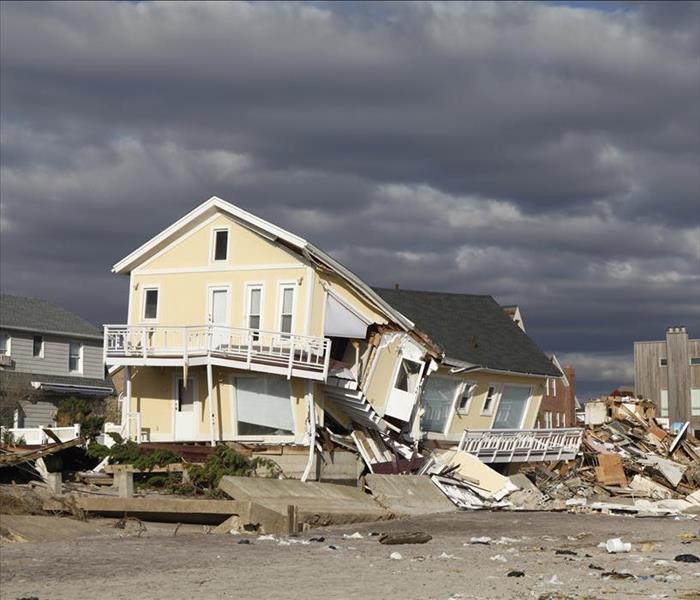 Property was destroyed after a hurricane in Etowah, NC.
Property was destroyed after a hurricane in Etowah, NC.
The Responsibilities of FEMA in a Disaster Area
The Federal Emergency Management Agency or FEMA responds to all declared domestic disasters and emergencies. This could include natural weather events such as hurricanes and tornadoes, or it could include man-made catastrophes such as wildfires or even terrorist acts. The agency has responded to many large disasters in recent years, including hurricanes in New Orleans, Puerto Rico, the U.S. Virgin Islands, and New York and New Jersey. The agency separates dealing with disasters into four stages:
- Mitigation
- Preparedness
- Response
- Recovery
As a common and recurring problem, rising waters are one particularly challenging aspect of disaster management. Dangerous water events occur in nearly every part of the country.
The Elements of Effective Flood Response and Recovery
The first part of a response after a major storm deals with treating injured individuals and rescuing those in trouble. This can tax community resources, so FEMA is often instrumental in bringing in outside help. These include first responder personnel as well as managing and arranging assistance in the form of food and shelter. Providing valuable information to the community is also a critical role at this time.
The recovery stage that follows includes the use of a professional storm mitigation franchise that has access to significant corporate resources. Industrial equipment such as water vacuums, pumps, and dryers all help mitigate flooding damage. Highly-trained technicians assess the situation for each impacted homeowner in Etowah, NC, and come up with an effective recovery plan.
The Final Stage
Damaged structures are rebuilt using knowledge obtained in other disasters and using the best practices of the restoration industry. Financial burdens are also addressed at this time, as organizations help individuals find funding in the form of loans or grants. Many government agencies work to find resources for homeowners who did not carry insurance, and a disaster declaration often provides additional funds. FEMA plays a coordinating role in helping the country deal with large-scale disasters.
4 Flood Safety Tips for Protecting Your Home
5/5/2022 (Permalink)
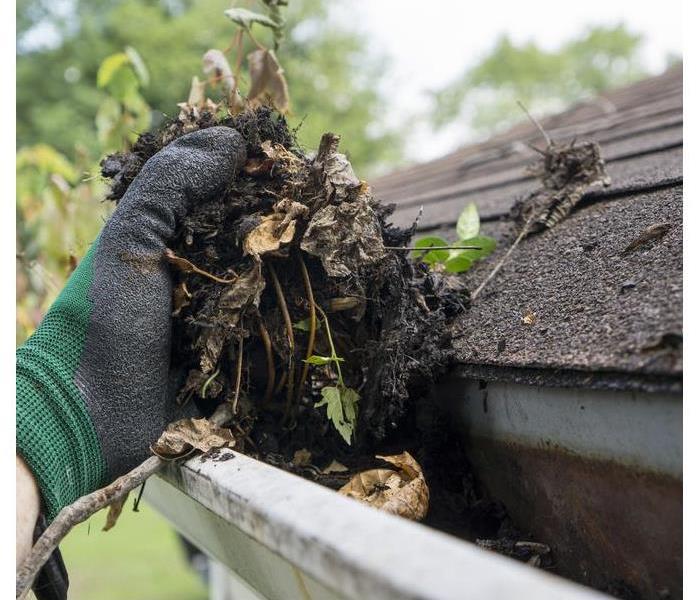 Gutters and downspouts are among the most important tools outside your home.
Gutters and downspouts are among the most important tools outside your home.
Flood Prevention Methods For Your House
There is no feasible way to ensure your house is flood proof. While there are many ways to ensure the flood safety of your home through recommended prevention methods, there are always going to be potential threats or unforeseen circumstances that can result in flooding. The best any homeowner can do is talk to a local flood restoration specialist in Hooper's Creek, NC, to figure out the best prevention methods for your house.
1. Ensure Proper Slope for Flood Safety
One of the best safety tips is to ensure the slope of landscaping and driveways is correct. The property surrounding your home should slant away from your house's foundation, typically at about 10°. If you do not have an adequate slope, water will settle against the foundation, potentially leading to cracks, settling, and flooding.
2. Maintain Exterior Components
Gutters and downspouts are among the most important tools outside your home. The components ensure water exits the roof and settles away from the foundation. When gutters and downspouts are clogged, water can settle along the foundation. Additionally, water can back up underneath shingles or find its way into your home through damaged seals.
3. Install Prevention Tools
The best way to prevent interior flooding is by installing prevention devices, such as sump pumps and backflow valves. The type of device best suited to your property will depend on your location and potential flood zone. Therefore, it is best to contact a plumbing professional for recommendations.
4. Perform Routine Maintenance
Clogged drains or collapsed pipes can also lead to a flooded basement. It would be best to consider hiring a plumbing service to perform routine, bi-annual inspections and cleanings to avoid such issues.
The key to flood safety is to follow proper prevention strategies and routine maintenance. While no method guarantees a dry home forever, each reduces flooding risks.
Preventing Sewage Backup
3/24/2022 (Permalink)
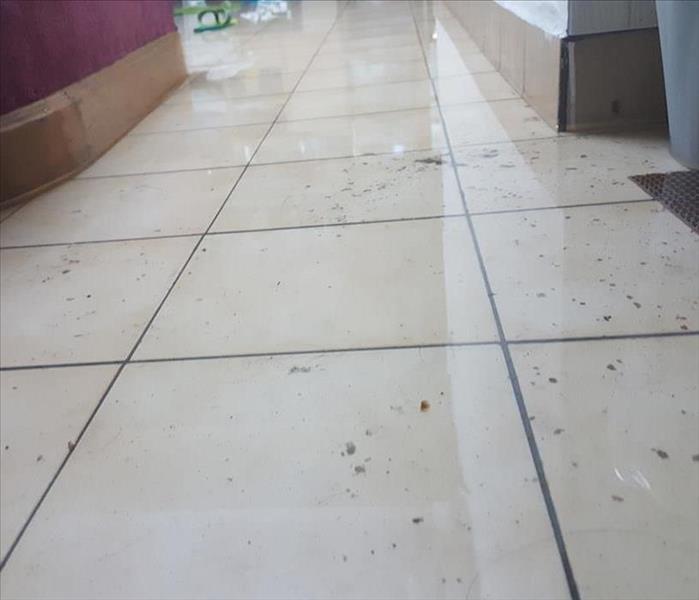 A sewer backup at your home is never fun.
A sewer backup at your home is never fun.
Four Ways To Prevent Future Sewage Backups
A sewer backup at your home is never fun. It is even less enjoyable when it leads to storm damage at your Etowah, NC, home. If you have been suffering through a lot of these backups, it may be time for you to find ways to prevent them from happening again. Here are four actions you can take to prevent future sewage backups.
1. Install a Backwater Valve
Backwater valves are a very common solution to backups. They are designed to help sewage flow away from your house - but they also close if a backup is imminent. Remember that a certified contractor must install such a valve.
2. Use a Standpipe
A standpipe is a simple sewage solution - it is a pipe that is installed right in your floor drain. What makes it unique is that it has a rubber seal that is airtight, so any water that comes out of your drain is usually directed to the pipe rather than the floor. You can also remove the pipe after flooding is no longer an issue, and the remaining water will then drain.
3. Consider a Floor Drain Plug
These plugs are installed below your floor drain grates. They prevent water from backing up when sewage conditions are poor, letting the water return through its opening after the sewers calm down. They are typically very affordable and easy to install.
4. Buy an Overhead Sewer
Did you know that overhead sewer exists? They tend to be a less popular option due to their high cost, but they are highly effective. A professional must install this flood prevention tool.
Remember that even when you take preventative action against sewage backup, sewer cleaning and other upkeep are still important for a better chance of protecting your home. If you are already suffering from water-related destruction, contact a local residential storm damage company for remediation assistance.
Is Mold Inevitable After a Flood?
1/12/2022 (Permalink)
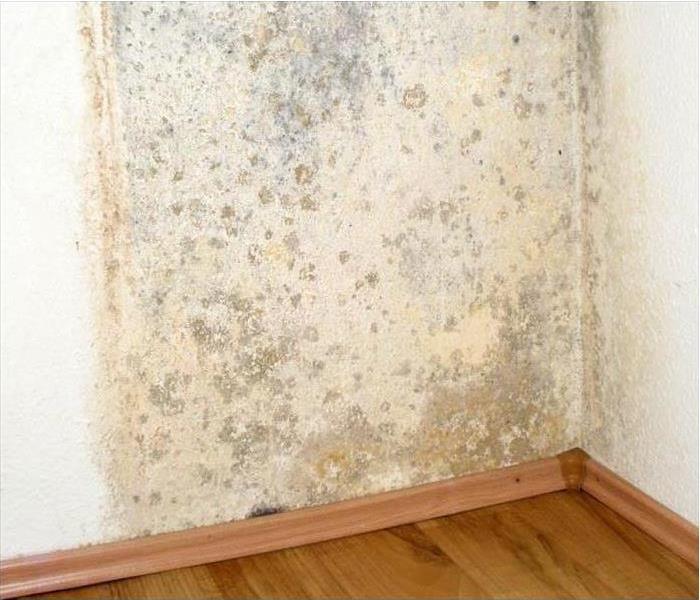 Mold growth after a flood.
Mold growth after a flood.
After a flood, is Mold Unavoidable?
When storm waters cause flooding in your Fletcher, NC, home, the cleanup process may take some time. Not only do you likely need to hire a water removal service, but you may also have to repair secondary damage after the water has been cleaned up. While additional damage is a possibility, mold growth does not have to be inevitable after a storm causes water to permeate your house. You can avoid it by doing the following:
- Managing excessive humidity
- Removing standing water
- Reacting quickly to the flood
To better understand if your home may be affected by mold, you need to know what contributes to its growth. The type of water, the time it takes to start cleaning and thoroughness of the cleanup job each plays a part in whether or not mold will start to grow.
Dirty Water
If your home is flooded after a storm, chances are the water came from an overflowing river or backed-up sewer system. These water sources are commonly contaminated with spores and bacteria. Water from a dirty source can lead to mold growth quicker than flooding from a broken water supply line.
Lengthy Wait Time
If water sits in your home for a long period of time, the risk that mold will begin to grow is increased. Stagnant water and high humidity create the ideal environment for mold to develop. Quickly calling in a cleaning crew is always a good idea when you find standing water in your home.
Partial Cleanup
Completely removing the effects of flooding is important. Any residual dampness or humidity can encourage mold growth. Some homeowners try to take on the cleanup on their own, but they don't always know how to totally remove water damage. This partial cleanup makes it possible for spores to spread throughout a home.
Mold doesn't have to grow after a flood. Addressing flood cleanup and mold removal as soon as possible can help reduce the damage done by a storm.



 24/7 Emergency Service
24/7 Emergency Service






